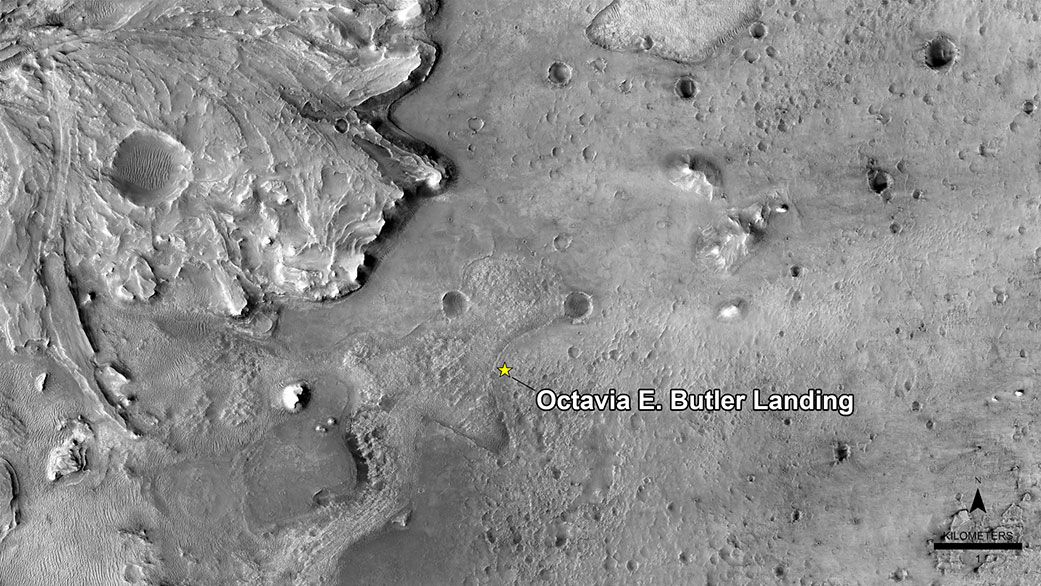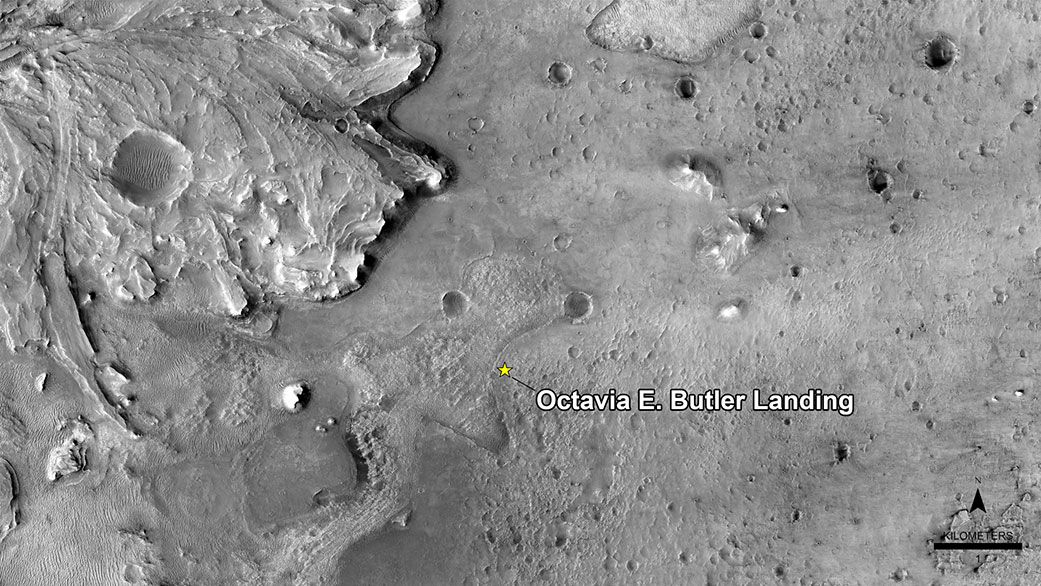
The Perseverance rover‘s Red Planet touchdown site has been renamed for Octavia E. Butler, the noted African American science fiction author.
NASA announced they would informally redesignate the Mars rover’s landing site inside Jezero Crater on Friday (March 5), during the same press conference where the agency revealed Perseverance made its first drive on Mars.
Butler was the first African American woman to win both the Hugo and Nebula awards that honor great science fiction, and the first science fiction writer overall who received a MacArthur Fellowship. Her notable work includes the stories “Kindred,” “Bloodchild,” “Speech Sounds,” “Parable of the Sower,” “Parable of the Talents,” and the “Patternist” series. She died in 2006.
Related: NASA’s Mars Perseverance rover mission to the Red Planet in photos
“Butler’s pioneering work explores themes of race, gender equality in humanity, centering on the experiences of Black women at a time when such voices were largely absent from science fiction,” Katie Stack Morgan, Perseverance deputy project scientist at NASA’s Jet Propulsion Laboratory in Pasadena, California, said during the Friday press conference, which is available on YouTube.
“Butler’s protagonists embodied determination and inventiveness, making her a perfect fit for the Perseverance rover mission and its theme of overcoming challenges,” Stack Morgan continued. “Butler inspired and influenced the planetary science community and many beyond — including those typically underrepresented in STEM [science, technology, engineering and math] fields. The fact that her works are as relevant today — if not more so — than when they were originally written and published is a testament to her vision, genius and timelessness.”
NASA has a long-standing practice of informally naming landmarks on Mars and other worlds; these names are not recognized by the International Astronomical Union that officially designates solar system locations, but the names do show up in scientific papers, NASA said in a statement.
Previous Mars missions also included homages to prominent members of the science community or communicators of science, dating all the way back to the 1970s. The Mars Science Laboratory mission landing site for the Curiosity rover, in Gale Crater, was informally named for science fiction author Ray Bradbury in 2012, shortly after the author’s death.
“Naming Perseverance’s landing site in honor of Octavia E. Butler honors notable science fiction writers, a theme also used by the Mars Science Laboratory team,” Stack Morgan added during the press conference. “We chose on this mission to continue this theme in appreciation of the role that science fiction writers have played in inspiring so many of us to become the engineers, scientists and explorers who turn science fiction into reality for the next generation.”
Related: Google Doodle Honors Science Fiction Author Octavia E. Butler
The spot where @NASAPersevere began its journey on Mars now bears the name “Octavia E. Butler Landing.” Groundbreaking author @OctaviaEButler is a perfect fit for this mission, as her main characters embody overcoming challenges.📸: Ching-Ming Cheung pic.twitter.com/itgooPxpCNMarch 5, 2021
In 2004, the Mars rovers Spirit and Opportunity had their landing site locations dubbed the “Columbia Memorial Station” and “Challenger Memorial Station,” respectively, after the two fallen space shuttle crews of 2003 and 1986.
Previous to that, the Mars Pathfinder lander was renamed the “Carl Sagan Memorial Station” after touchdown with the Sojourner rover in 1997; Sagan, who died shortly before the landing, was a planetary scientist at Cornell University who played a role in several NASA missions, including the Voyager 1 and 2 golden records.
NASA’s first Mars lander, Viking 1, was renamed “Thomas A. Mutch Memorial Station” in honor of Thomas Mutch, the leader of the Viking imaging team, after his death in 1980 — two years before the lander’s mission ended. In the same era, Viking 2 received the new name of “Gerald Soffen Memorial Station” after Gerald Soffen, the chief scientist of the Viking missions.
The agency, in fact, extended this informal Mars naming practice to Saturn’s moon Titan in 2007. NASA and the European Space Agency jointly agreed to name the Huygens touchdown site after Hubert Curien, whose work as chair of the ESA Council in the 1980s included setting up a science program, “Horizon 2000”, that included the Huygens mission.
Follow Elizabeth Howell on Twitter @howellspace. Follow us on Twitter @Spacedotcom and on Facebook.



